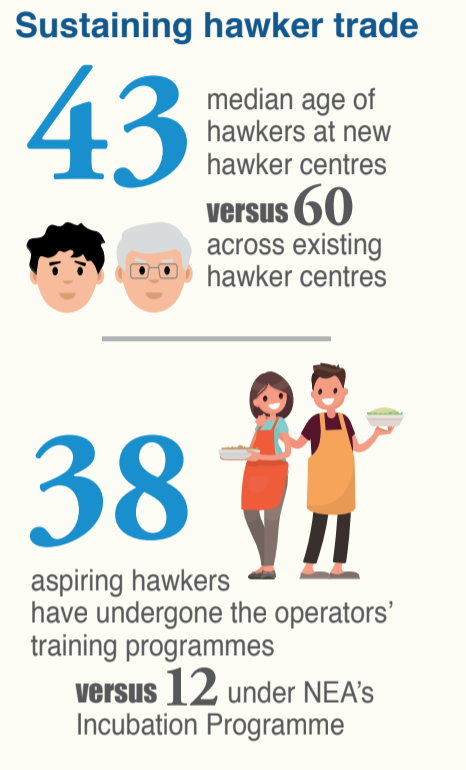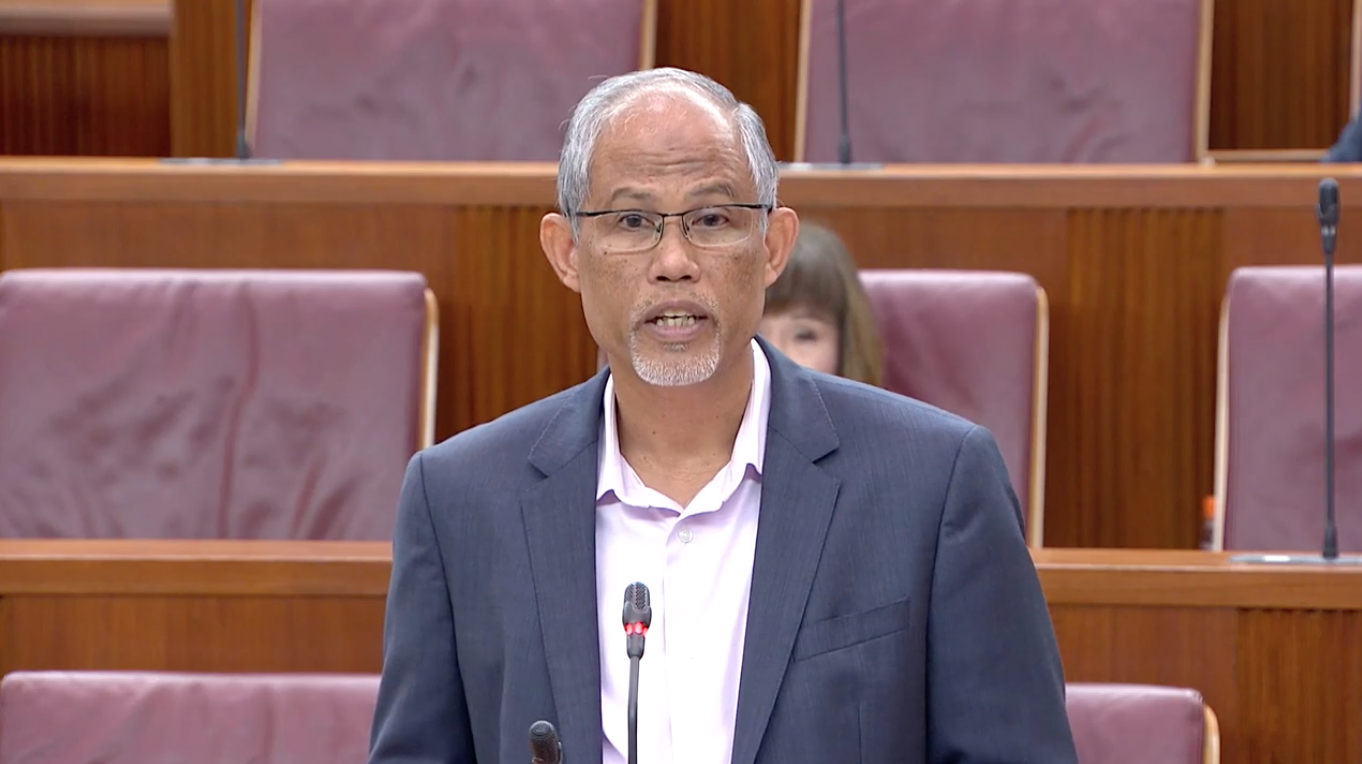The new socially-conscious enterprise hawker centre (SEHC) model has shown signs of early success, and therefore should be allowed more time for their kinks to be ironed out, says Minister for the Environment and Water Resources Masagos Zulkifli.
Speaking about the SEHC model in Parliament on Monday, Nov. 19, Masagos acknowledged the ongoing public discussion and criticism of alleged profiteering on the part of these operators, but took the opportunity to expound on some of the benefits Singaporeans have enjoyed thanks to them.
SEHCs bring in new ideas & inject innovation that hawkers & govt cannot
Masagos says, to begin with, that unlike National Environment Agency-run hawker centres, SEHCs have the ability to curate food stalls for quality and variety, instead of having to award one vacant stall at a time based on who submits the highest bid.
"They are also able to bring in famous food recipes, and are better placed to run hawker incubation programmes to help sustain the hawker trade. They also innovate to improve footfall and enhance vibrancy of the centres through better marketing and place-making programmes, and not just leave it to chance.
As the single operator of each hawker centre, with F&B and management competencies, these SEHC operators can help our hawkers weather the competition from other F&B alternatives and adapt to technological disruptions, better than the hawkers can individually. In time to come, the better SEHCs will develop capabilities to support and sustain the hawker trade that we will appreciate."
If the NEA tried to run a similar allocation system to make sure hawker centres didn't end up with rows of stalls selling similar food, it would be complex to execute and subject to potential audit issues, Masagos added.
Masagos also cited innovation as another benefit provided by the SEHC.
Here, he elaborated that innovation applied to multiple areas -- also including marketing to increase footfall and vibrancy of the centres, and helping hawkers better adapt to "technological disruptions".
He accordingly cited as examples the introduction of initiatives such as "complimentary parking, lucky draw programmes and shuttle bus services for office workers" to increase footfall.
Explaining the suite of charges levied by SEHCs on hawkers
In explaining how NEA picked the SEHC operators, Masagos repeated some of the previous things that the government said about this:
- The requirement to be transparent about operating costs, additional (optional) service charges and stall rental prices, all subject to NEA's approval
- These charges cannot be changed throughout the term of a hawker's tenancy
Masagos also touched on what are referred to as "pass-through" charges that are a part of hawkers' operating costs, such as the table cleaning fees and service and conservancy charges.
They're called "pass-through" because they're basically charges levied by third-party suppliers of services that are passed on from SEHC operators to hawkers, without any profit on the operators' end.
He adds that by way of "a reality check", such costs are compared with alternatives such as the hiring of additional hawker assistants.
 Source: NEA
Source: NEA
Finally, Masagos also added that SEHC operators are required to "to reinvest at least 50 per cent of any operating surplus into social benefits for the hawker centres and stallholders."
Flexibility for hawkers in setting prices of food
On this instance of a successful outcome by the SEHC model, Masagos stressed that "food prices at SEHCs are affordable and comparable to existing centres" and were "generally lower than prices at surrounding coffee shops and food courts".
This was because the SEHC operators "have made available at least one affordable meal option at $3 and below for each stall, and allowed hawkers to determine prices for other dishes".
Masagos said that such flexibility has been the outcome of SEHC operators working with hawkers to:
"offer a range of food offerings at different price points, so that there are both attractive options that residents are willing to pay for, and at the same time affordable options when residents want that."
This means prices are not kept artificially low, either.
SEHCs are open for breakfast, lunch & dinner
Masagos also pointed out that this was a "major request" made by the public — because there are several existing hawker centres that focus on only one or two main meals per day, with some hawkers only working three or four days a week.
Residents living in the vicinity of these hawker centres then have limited options for affordable food when the stalls are all closed, he adds, so this change is helpful on the part of SEHCs.
Doing a far better job of attracting new, younger talent
Perhaps the most important reason why the SEHCs have been successful, says Masagos, is that it has successfully attracted new blood into the trade.
He pointed out that the median age of hawkers at the seven SEHCs is 43 years old, far lower than the median age of 60 at NEA-run hawker centres.
Calling it "an encouraging sign", the minister attributed it to initiatives taken by SEHCs such as Timbre’s Incubator Programme and OTMH’s Train and Place Entrepreneurship Scheme which are aimed at grooming new hawkers.
These programmes have so far trained up to 38 new hawkers in total — compared with NEA's incubation programme, which has thus far trained 12, of which four have since withdrawn.
 Source: NEA
Source: NEA
Masagos also cited the use of new automated tray return and centralised dishwashing systems at SEHCs as another reason they were successful in attracting new blood to join the hawker trade.
Such systems, he added, allowed SEHC hawkers to overcome labour shortages and minimise the menial tasks they had to do, thereby allowing hawkers to focus on their cooking.
"Taken together, these initiatives reduce the physical burden of being a hawker, and can go a long way to help sustain our hawker trade."
He said on the whole that he was heartened by public comments praising existing NEA hawker centres as being run better than the SEHCs, but "it is not enough to keep doing things the same way."
As such, he adds, "(this) is why we have to continue with SEHC model."
You can watch Masagos' speech in full here:
Top image screenshot from govsingapore YouTube
If you like what you read, follow us on Facebook, Instagram, Twitter and Telegram to get the latest updates.
